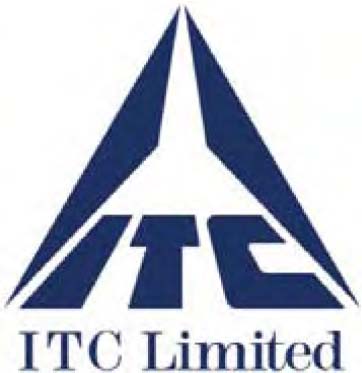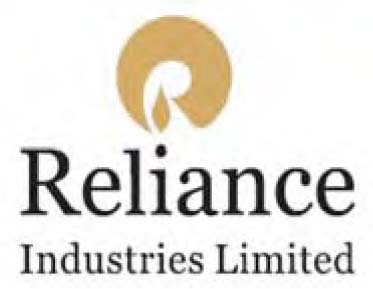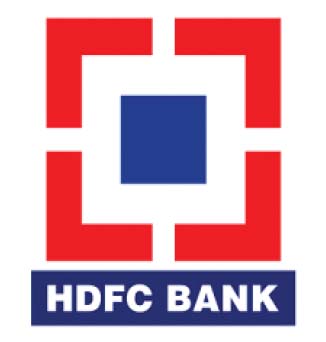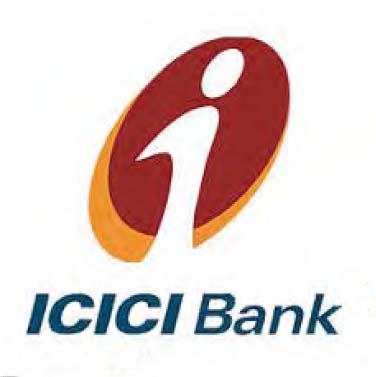Want to Subscribe?
Read Corporate India and add to your Business Intelligence

![]() Unlock Unlimited Access
Unlock Unlimited Access

Published: June 30, 2025
Updated: June 30, 2025
IN recent years, the country has been experiencing a twin investment phenom enon of retail investors shying away from erstwhile popular avenues (company fixed deposits, precious metals, real estate) and joining the fast-growing equity bandwagon.
SAMPLE this: the BSE’s total mar ket capitalisation has reached Rs 415.6 trillion ($ 5 trillion) as of May 2024, with a 49 per cent surge in the past year alone. Concomitantly, the BSE Sensex reached a new high of 85,978.25 points in September 2024 and in terms of market cap surged to Rs 16,606,423.34 crore very recently.
STOCKS come in categories like multi-bagger, ‘BUY’-rated by analysts, and high-return. The latter are an investment avenue marked by strategic growth, wealth multiplication and adaptability to dynamic markets. Investing in these stocks allows for strategic growth where informed decisions can lead to impressive financial gains over time.
THIS time, Corporate India has curated a list of seven high-return scrips with high growth potential that are linked to funda mentally strong, well-managed companies.
Oflate, the Indian stock market has emerged as one of the most attractive avenues for profitable investments. Common investors now prefer to keep away from erstwhile popular avenues like company fixed deposits, as many companies have defaulted in repaying investors’ money. Precious metals like gold and silver have reached skyhigh levels in the wake of growing geopolitical tensions worldwide. Real estate needs relatively sizeable invest ments and, besides, has turned risky of late. Paintings are a niche investment avenue in India, where most people don’t under stand the real value of an artistic product. On the other hand, the stock market offers various attractive options. If investments are made judiciously, returns can be attractive and the investor can get other benefits like attractive dividends, rights issues and bo nus issues, and that at an above-value appreciation.

Little wonder then that the equity cult is spreading far and wide in the country. Today, the number of dematerialised accounts, which were around 20 million in early seventies, has skyrocketed to around 200 million (the official figure for March 2025 is 192.4 million). This is a record of sorts for a country that became independent in 1947. What is more, the monthly average of 3.42 million new accounts is also a record for a single financial year. Elaborates a research ana lyst working with a leading equity research organisation, “Retail access to markets has improved dramatically over the past five years, spanning primary issuances, secondary trading and indirect investments like mutual funds, PMS, and AIFS.”
What is more, retail investor participation in the Indian stock market is being driven by factors like increased smartphone adoption, favourable market conditions and simplified account opening processes. According to NSDL, as on May 31, 2025, the number of active client accounts had exceeded 40 million. And the number of companies in which more than 75 per cent shares are demated was near ing 30,000.
Besides domestic investors, foreign investors (FIIs-For eign institutional Investors and FPIs-Foreign Portfolio In vestors) have also been attracted to Indian stock market. In 1997-98, FIIs had invested Rs 12,250 crore in the Indian stock market, with equity investments alone amounting to Rs 1,411.95 crore. These figures have shot up to Rs 86,875.89 crore in fiscal 2024-25, with the equity portion accounting for Rs 31,991.90 crore.
In the wake of a fast-growing equity cult in the country, the market capitalisation of all listed stocks on the BSE has registered a significant growth over the last five years, reach ing Rs 415.6 trillion ($ 5 trillion) as of May 2024. This rep resents a substantial increase from previous years, with a 49 per cent surge in the past one year alone. The BSE Sensex also reflects this substantial growth, reaching a new high of 85,978.25 points on September 2024 and in terms of mar ket capitalism, valuation surged to Rs. 16,606,423.34 crore on July 2, 2025.
With this bottomline in the stock market, several share holders have minted substantial profits, attracting other in vestors to go for stock buying. However, no one can take the stock market for granted. If one's stock selection is not proper, he or she may suffer losses too. That is why experts advise investors to select stocks after adequate research.
Little wonder that knowledgeable investors study vari ous companies, do intensive research (or take advice from expert researchers) and select stocks according to their pref erences. Stocks are divided into various categories like multi bagger, stocks that are rated 'BUY' by research organisations, and high-return stocks.
Today, we have selected 9 high return category stocks. This category is a dynamic landscape where the pursuit of substantial financial gains takes centre-stage. These stocks symbolise the potential for impressive returns, in viting investors to navigate strategic opportunities and capitalise on the dynamic nature of the market for signifi cant wealth creation. It is well-known that renowned in vestor, the late Rakesh Jhunjhunwala, who was consid ered the Indian 'Warren Buffet', had invested substan tially in Titan, a Tata-Tamil Nadu government company, at a throwaway price of Rs 3, realising that it was a high return stock. Over the years, it shot up by over 1,000 times and is now quoted around Rs 3,700-3,800. Stories abound of people who had purchased shares of MRF, TCS, Supreme Industries, Page Industries, Oracle Finance, Infosys, 3M India, Info-Age, Apar Industries, Vesuvius India and Avenue Supermart, among others, and became millionaires.
But when we talk of high returns, there is always an element of high risk. That is why we have selected 7 high return scrips, after satisfying ourselves that they are funda mentally strong, well-managed companies with high growth potential.
Why should one invest in high-return stocks? By in vesting in these stocks, an investor can expect substantial financial gains ensuing from impressive returns on the in vestment. High-return stocks present an opportunity for in vestors to multiply their wealth significantly, capitalising on the potential for substantial returns. These stocks thrive on dynamic market opportunities, attracting investors who actively seek to capitalise on trends that can maximise their investment returns. For those aim ing to optimise investment portfolios, high-return stocks represent an appealing option, promising substantial re turns and contributing to overall portfolio growth.
After all, high-return stocks are an investment avenue marked by strategic growth, wealth multiplication and adapt ability to dynamic markets. Investing in these stocks allows for strategic growth where informed decisions can lead to impressive financial gains over time. Corporate India has curated for its readers a list of 7 high-growth stocks worth considering for their portfolio.
ITC, formerly known as Imperial Tobacco Company, has undergone a remarkable transformation. During the last 115 years of its existence, the com pany has evolved from a British to bacco company to a well- diversi fied corporate entity, engaged in businesses including FMCG, paper, printing and packaging, hotels, and agri- business. The company con tinues to be in expansion and di versification mode.

ITC has more than 200 manu facturing facilitues across India. It has a wide distribution reach of over 6 million retail outlets across various trade channels, and 25 branches across various categories. By now, the company has emerged as the biggest cigarette maker and the second largest FMCG player in the country, with 80 per cent of the marketshare in cigarettes and a steadily rising presence in biscuits, noodles, snacks, choco lates, dairy products and personal care products. Its hotels business has been demerged.
The company has been making steady progress in its financial performance. During the last 12 years, its sales turnover has more than doubled from Rs 35,306 crore in fiscal 2014 to Rs 75,323 crore in fiscal 2025, with operating profit inching up from Rs 13,080 crore to Rs 25,839 crore and the profit at net level more than doubling from Rs 9,001 crore to Rs 20,751 crore. The company's financial position is very strong, with reserves at the end of March 2025 stand ing at Rs 68,779 crore - over five times its equity capital of Rs 1,251 crore.
Prospects for the company going ahead are all the more promising, mainly on account of the strong pace of growth in cigarettes, a growing marketshare in FMCG, an expand ing business in agri products, and steady growth in the pa per printing and packaging businesses as well as in infor mation technology. The share price of the company is around Rs 410-415. The long-term prospects are highly promising as the FMCG division is on a strong growth path, the pace of which is expected to speed up going ahead. Within a year, the share price is likely to cross Rs 550.
Tata Consultancy Services, popularly known as TCS, is a prestigious corporate entity of the Tata conglomerate that specialises in information technology services, consulting and business solutions. Today, it is the largest IT company in the country with a global footprint. It continues to post healthy margins and remains an undisputed leader in digital transformation services. For over five decades, it has sup ported numerous global corporations in their transforma tion endeavours. The company delivers consulting prow ess with cognitive and engineering solutions, and is noted for its minimal debt levels.

TCS has made rapid strides in its financial performance. During the last 12 years, its sales turnover has more than trebled from Rs 81,809 crore in fiscal year 2014 to Rs 2,55,324 crore in fiscal 2025, with operating profit shoot ing up from Rs 25,153 crore to Rs 67,407 crore and the profit at net level surging from Rs 19,332 crore to Rs 48,797 crore. The company's financial position is very strong, with reserves on March 31, 2025 standing at Rs 94,394 crore against an equity capital of Rs 362 crore. Today, it is a cash rich, zero-debt company with high client retention. For many investors, it is the textbook definition of a long-term invest ment avenue ensuring very high returns.
Future prospects for TCS are highly promising as, mov ing with the times, it is betting big on arti ficial intelligence (AI) to transform its work environment. The company has made AI central to its transformation drive, and has revamped its top leadership. The AI transformation of TCS is as much about culture as it is about technology. This will require exceptional col laboration across functions and groups.
The company is also launching a state-of-the-art inno vation centre at Changi Business Park in Singapore. This centre will enable its clients and collaborators, comprising 50 SMEs and 10 start-ups, over the coming year to collabo rate with experts in developing prototyping and scaling AI issues. According to Punit Agarwal, country head of TCS, Singapore, the centre will serve as a platform for fintech companies and start-ups to showcase their products and join TCS's co-innovative network, which connects innova tive technology with TCS corporate customers globally.
TCS has a well-established network of research and innovation centres under its global innovation eco-system, TCS Pace. These centres span key cities, including Amsterdam, London, Letterkenny, New York, Pittsburgh, Paris, Riyadh, Stockholm and Toronto. In the Asia Pacific region, TCS has significantly deepened its innovation eco system with dedicated hubs in Manila, Singapore, Sydney and Tokyo. The share price is quoted around Rs 3,420. Discerning investors with a long-term investment perspective can in clude this stock in their portfolio to enjoy high returns.
A well-diversified giant with interests in oil refining, telecom, retail and petrochemicals, Reliance Industries, headed by far-sighted and dynamic businessman Mukesh Ambani, is India's largest and most profitable private sector company. It was promoted by legendary first-generation en trepreneur Dhirubhai Ambani, and has, during the half-century of its existence, emerged as a Fortune 500 company and one of India's most valuable stakeholder-centric organisations, building valuable assets for the country.

Ever evolving, the company continues to reinvent itself. Its push into green energy and digital platforms could be a defining long-term growth engine. With a market capitalisation of over Rs 20 lakh crore, it stands out for strong execution across sectors and future-ready bets. The company has made rapid strides in its financial performance. During the last 12 years, its sales turnover has more than doubled from Rs 433,521 crore in fiscal 2014 to Rs 964,693 crore in fiscal 2025, with operating profit shoot ing up more than four times from Rs 34,935 crore to Rs 162,498 crore, and the profit at net level expanding more than three times from Rs 22,548 crore to Rs 81,309 crore.
Prospects going ahead are all the more encouraging as the company is going for further reconstruction. It has de cided to consolidate its consumer goods business. Instead of having its FMCG business scattered across multiple arms like Reliance Retail Ltd, Reliance Retail Venture Ltd and Reliance Consumer Products Ltd, the company plans to consolidate everything in a new entity styled New Reliance Consumer Products Ltd (New RCPL). After putting all its consumer goods brands under one roof, New RCPL will be demerged into a separate company, a subsidiary of Reli ance Industries. There is also a plan to float an IPO for its telecom busi ness (Jio). Shareholders of the company will enjoy the ben efits of unlocking shareholders wealth.
An undisputed leader in private sector banking, with a long record of disciplined growth, best asset quality in its class with low NPAs, and remarkable innovative digital bank ing practices, HDFC Bank has, following its merger with parent company HDFC, be come all the more formidable. The Mumbai-headquartered bank has delivered strong deposit growth with aver age deposits increasing 16 per cent yoy. In fact, deposits grew faster than loans, enabling the bank management to make progress in normalising its CD (credit deposit) ratio. As far as the CASA (current ac count-savings account) ratio is concerned, it is among the highest in the industry. It stands out in the banking sector on account of credit growth and tech-forward banking.

According to the bank management, HDFC has suffi cient liquidity and capital to support loan growth comfort ably when the macro-economic environment becomes more favourable. The bank has not exited any product or geogra phy and is leveraging its liquidity and capital tailwind, await ing the right time to scale up loans. During the last quarter of fiscal 2025, despite the slow down in the loan book, key ratios have remained stable due to high-quality origination and effective collections. Shares of the company with a face value Re 1 per piece are quoted around Rs 1,980 as the long-term prospects for the bank are highly promising. If an investor is building a portfolio of shares for long-term investment, HDFC Bank is hard to ignore.
An industrial development and investment organisation-turned-commercial bank, ICICI Bank is India's second largest private sector bank, occasionally threatening to displace the number one bank. The bank enjoys an undisputed leadership position in various fi nancial services. It offers the entire spectrum of financial services to customer segments covering large and mid corporates, MSMEs, and agri and retail businesses, with half of them in rural and semi-urban areas. It has 16,125 ATMs spread across India. It is an international bank with subsidiaries in the UK and Canada, and branches in the US, Singapore, Bahrain, Hong Kong, Qatar, Oman, Dubai, China and South Africa. It also has representative offices in half a dozen countries. The company's UK subsidiary has set up branches in Germany and Belgium. The bank has acquired several small banks, including Anagram Fi nance, he Darjeeling and Shimla branches of Grindlays Bank, IKB (Russia), Sangli Bank and Bank of Rajasthan.

ICICI Bank was making good progress when the Chanda Kochchar fraud case hit its pace of growth. But the new management succeeded in staging a fast recovery and put the bank on a growth path once again. During the last 12 years, the bank's revenues more than trebled from Rs 49,479 crore in fiscal 2014 to Rs 186,331 crore in fiscal 2025, with the profit at net level shooting up more than four times from Rs 11,677 crore to Rs 46,081 crore. The share price of the bank is in the Rs 1,440-45 range. The bank has tremendous growth potential. Discerning in vestors can include these stocks in their portfolio.
State Bank of India (SBI) is an Indian international pub lic sector bank and financial services body. The Mumbai headquartered banking entity is the country's oldest (200 years old) and the largest commercial bank with a 23 per cent marketshare by assets and a 25 per cent share of the loan and deposits market. It is also the tenth largest em ployer in India with near 250,000 employees. Globally speaking, SBI is the 47th largest bank in the world by total assets and was ranked 178th in the Fortune Global 500 list of the world's largest corpo rations of 2024. In Forbes' Global 2000, SBI was ranked 55th.

SBI has a rich history behind it. It descends from Bank of Calcutta. Its contemporary at that time, Bank of Madras, was merged with the other two presidency banks in British India, Bank of Calcutta and Bank of Bombay, to form the Imperial Bank of India, which in turn became the State Bank of India after the country's independence. Over the course of its 200 year history, the bank has grown from the mergers and acqui sitions of more than 20 banks. In 1955, the government of India took control of the bank, with Reserve Bank of India, the country's central bank, taking a 60 per cent stake and renaming Imperial Bank of India as State Bank of India.
The bank has made rapid strides on the financial front. During the last 12 years, its revenues have more than doubled from Rs 189,062 crore in fiscal 2014 to Rs 490,938 crore in fiscal 2025, with the profit at net level taking an almost five fold jump from Rs 14,807 crore to Rs 69,543 crore. Prospects for the company going ahead are all the more promising. The bank itself is doing very well. What is more, its mutual fund (SBI Mutual Fund), and insurance (SBI Gen eral Insurance) and payments arms (SBI Capital Markets) are seen as prime IPO candidates, and analysts see these as accounting for a meaningful chunk of SBI's embedded value. According to the fiscal 2025 annual report, the PBT contri bution from subsidiaries and associates stood at Rs 14,217 crore, reflecting a 15 per cent yoy rise.
For a bank that clocks over Rs 70,000 crore in annual profit, the growth story is evolving. It is no longer just about net interest margins or slippages, it is now about how the market values the sum of SBI's parts, especially the unlisted ones that have matured into cash generating businesses. If SBI moves ahead with IPOs, it will be a valuation inflection point with significant re-rating potential.
"SBI's subsidiaries contribute nearly Rs 3 lakh crore to its SOTP value, based on market cap and AUM (Assets Under Management) benchmarks. Our overvaluation and applying a holding company discount assume a realisable value of around Rs 2.5 lakh crore," maintains Vikas Gupta, CEO of Omniscience Capital. That would be roughly one-third of SBI's current market capitalisation of Rs 7.1 lakh crore. The share price of SBI is quoted around Rs 800-810. This price is bound to shoot up by at least 20 per cent. Discerning investors with long-term perspective can include this banking scrip in their portfolio.
Bengaluru-headquartered Hindustan Aeronautics, a PSU is one of the oldest and the largest aerospace and de fence manufacturers in the world starting with aircraft manu facturing as early as in 1942 with licensed production of Harlow PC -5 Curtiss P-36 Hulk and Vultures A-31 Ven geance for the Indian Air Force. Hal currently has 11 dedi cated Research and Development (R&D) centre and 21 manufacturing divisions under 4 production units spread across India. The com pany was 'Maharatna' status. At present the com pany is engaged in de signing and manufactur ing of lighter jets, helicopters, jet engines, and marine gas tur bine engine, avionics, hardware development, spares supply, overhauling and upgrading of Indian military aircraft.

hauling and upgrading of Indian military aircraft. The company is performing very well on the financial front. During the last 11 years, its sales turnover has almost doubled - from Rs. 15,939 crore in the fiscal 2015 to Rs. 30,931 crore in the fiscal 2025 with operating profit shoot ing up over 4 times from Rs. 2379 crore to Rs. 9608 crore and the profit at net level surges over 3 times from Rs. 2399 crore to Rs. 8364 crore. Prospects for the company are all the more promising going ahead. The company is enjoying a robust order book. By March 2025, it stood at Rs. 94,000 crore. What is more the com pany is going to be awarded orders worth Rs. 1.5 lakh crore in the next 2-3 years. This provides low double-digit rev enue growth visibility over the next few years.
Again, the government push for the purchase of do mestic defence aircraft under the make in India initiative will create long term sustainable demand growth for HAL as it is India's main supplier of military aircraft. HAL has strong government support a robust order book and proven execution capabilities. Shares of the company (face value Rs. 5 per share) is quoted around Rs. 4990. Discernible investors should not ignore these stocks which must be added to their portfolio.

November 15, 2025 - First Issue

Industry Review

Want to Subscribe?
Read Corporate India and add to your Business Intelligence

![]() Unlock Unlimited Access
Unlock Unlimited Access
Lighter Vein

Popular Stories
Archives
